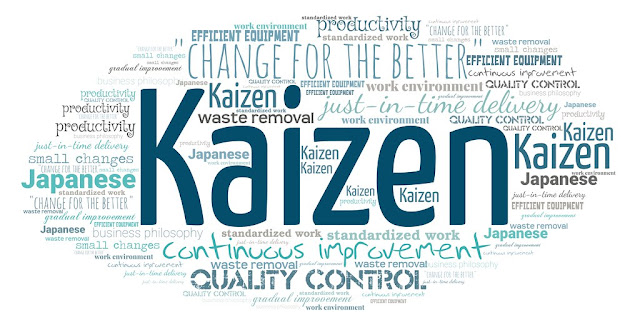Introduction When the World Hurt is not a book you read—it’s a space you enter. Liz Moyer Benferhat has crafted something far more intimate than a typical self-help guide. This is a workshop disguised as a manuscript, a shared emotional container between the author, the reader, and the collective human experience. Written between 2018 and 2025—and shaped intensely by the tumultuous years of 2023 to 2025—the book feels like a mirror held up to a world in pain, yet also to a humanity waking up. At its core, this is a book for the people who care deeply, feel intensely, and are tired of oscillating between hope and heartbreak. For those who scroll the news with a knot in the stomach, who lie awake at 3 a.m. wondering what the future holds, and who are torn between staying informed and staying sane—this book is your companion. A Workshop for the Soul Benferhat opens the book with an unusual but compelling framing: this is not a “read and close” experience—it is a workshop. A shared space. ...
If we talk about a country which has a population of mere 10 crores, Tsunami is very common, approximately 1500 earthquakes used to come every year and in the 2nd World war, two atomic bombs were dropped in this country. If we will ask you what are the chances of this country's growth? You might doubt the future of this country. Some of you might have guessed this country's name right. Yes, we are talking about Japan. Now we will discuss that particular secret technique by which they have grown so much from the ashes. That technique is called "KAIZEN Technique".
Let's understand the meaning of Kaizen and see how we can apply this technique in our lives to become successful students, professionals, businessman or whatever we want. Kaizen technique says that to achieve any goal we must split the task into very small pieces so that smaller tasks can be done easily. It seems a very simple technique and not so revolutionary but its really amazing. Many industries had benefitted from kaizen techniques. Lets first talk about the health industry, scientists have identified a high rise building and met with employees working on the seventh floor. Employees working there never had exercised in their life. Researchers explained the health benefits of the exercise and then issued free Gym membership vouchers to them. Then scientists met with the employees at the Eleventh floor who are also not doing any type of exercise.
Researchers again explained the health benefits of the exercise but they have not provided free gym membership here but instead, they told employees to go to the canteen by stairs and daily climb one more step than the last day. After 1 year when researchers came back, they found that employees of the eleventh floor are very healthy as compare to seventh-floor employees. This means that small steps can lead to bigger results. Similarly, in the medical field, we can see many successful implementations of Kaizen. Earlier whenever smallpox disease affects one person then 2 to 3 lakh people used to die. But nowadays we do not bother about such diseases because, in 1796, Edward Jenner successfully applied the principle of Kaizen. He invented the concept of Vaccination, vaccines are those microorganisms that can kill us but if taken in a very small amount then these microorganisms can be used to protect us from life-threatening diseases. Similarly, the Kaizen principle is equally successful in other fields as well.
We must also ask small questions to ourselves. Whenever we ask questions to ourselves, our mind starts finding the answer. For example, if your friend asks you how many steps are in your home, then you will say what type of question is this. But if he asks this question frequently then you might start counting. Similarly when we ask the question again and again that what improvement is required in me then our mind starts thinking about those points. This technique was efficiently implemented by Toyota, the company which was on a verge of closing after the Second world war but subsequently improved and achieved pole position in car manufacturing. According to the 1990s data, the average American company used to give 450 dollars per suggestion to the employees but Toyota used to give 2 dollars per suggestion. Due to the very high amount Americans used to give an average of 3 suggestions per year as they try to give only revolutionary ideas. Toyota employees who used to give 200 suggestions annually, they try to improve even the smallest processes.
This Kaizen process helps us to be in action mode because whenever we split big goals into small, the action can be taken easily and efficiently. We have also seen that this technique is applicable to any field. For example, you can reduce your shopping expenses by just buying 1 less thing every month, we can clean our cupboard by just cleaning it for 5 minutes daily or whenever we feel stress then we can take a deep breath. By applying the Kaizen technique in our life, we can achieve our goals very easily.
Please follow us for exclusive content:
Facebook: https://www.facebook.com/motivationdrive01/
Instagram: http://www.instagram.com/motivation_drive01
TikTok: https://vm.tiktok.com/GkNRUj/
LinkedIn: https://www.linkedin.com/in/%F0%9F%8E%AF-raja-kumar-8ba50372/?originalSubdomain=in
YouTube : https://www.youtube.com/channel/UCSrGHVFiwydjmWFqMGytxmg
Our Website: https://www.motivationdrive.com/?m=1
Researchers again explained the health benefits of the exercise but they have not provided free gym membership here but instead, they told employees to go to the canteen by stairs and daily climb one more step than the last day. After 1 year when researchers came back, they found that employees of the eleventh floor are very healthy as compare to seventh-floor employees. This means that small steps can lead to bigger results. Similarly, in the medical field, we can see many successful implementations of Kaizen. Earlier whenever smallpox disease affects one person then 2 to 3 lakh people used to die. But nowadays we do not bother about such diseases because, in 1796, Edward Jenner successfully applied the principle of Kaizen. He invented the concept of Vaccination, vaccines are those microorganisms that can kill us but if taken in a very small amount then these microorganisms can be used to protect us from life-threatening diseases. Similarly, the Kaizen principle is equally successful in other fields as well.
We must also ask small questions to ourselves. Whenever we ask questions to ourselves, our mind starts finding the answer. For example, if your friend asks you how many steps are in your home, then you will say what type of question is this. But if he asks this question frequently then you might start counting. Similarly when we ask the question again and again that what improvement is required in me then our mind starts thinking about those points. This technique was efficiently implemented by Toyota, the company which was on a verge of closing after the Second world war but subsequently improved and achieved pole position in car manufacturing. According to the 1990s data, the average American company used to give 450 dollars per suggestion to the employees but Toyota used to give 2 dollars per suggestion. Due to the very high amount Americans used to give an average of 3 suggestions per year as they try to give only revolutionary ideas. Toyota employees who used to give 200 suggestions annually, they try to improve even the smallest processes.
This Kaizen process helps us to be in action mode because whenever we split big goals into small, the action can be taken easily and efficiently. We have also seen that this technique is applicable to any field. For example, you can reduce your shopping expenses by just buying 1 less thing every month, we can clean our cupboard by just cleaning it for 5 minutes daily or whenever we feel stress then we can take a deep breath. By applying the Kaizen technique in our life, we can achieve our goals very easily.
Please follow us for exclusive content:
Facebook: https://www.facebook.com/motivationdrive01/
Instagram: http://www.instagram.com/motivation_drive01
TikTok: https://vm.tiktok.com/GkNRUj/
LinkedIn: https://www.linkedin.com/in/%F0%9F%8E%AF-raja-kumar-8ba50372/?originalSubdomain=in
YouTube : https://www.youtube.com/channel/UCSrGHVFiwydjmWFqMGytxmg
Our Website: https://www.motivationdrive.com/?m=1




Comments
Post a Comment
Please do not add any spam link in the comment box